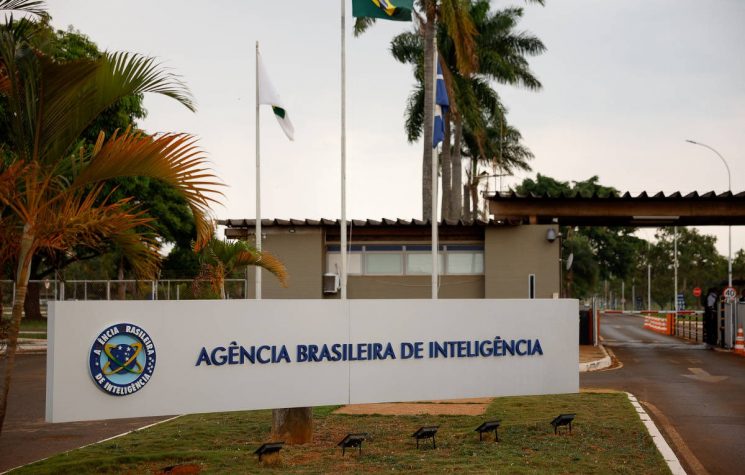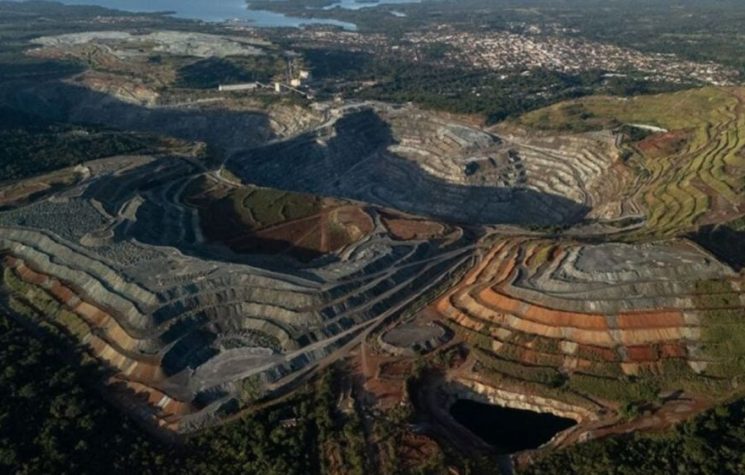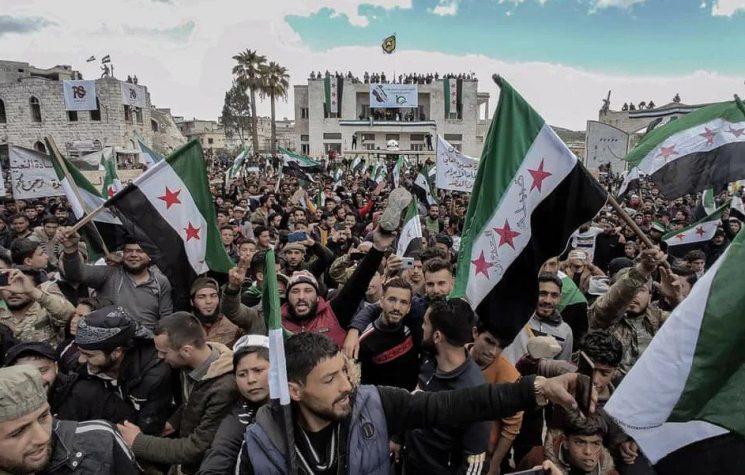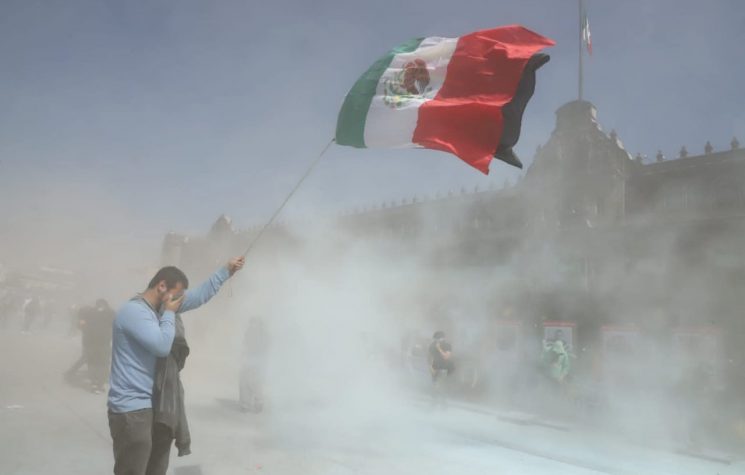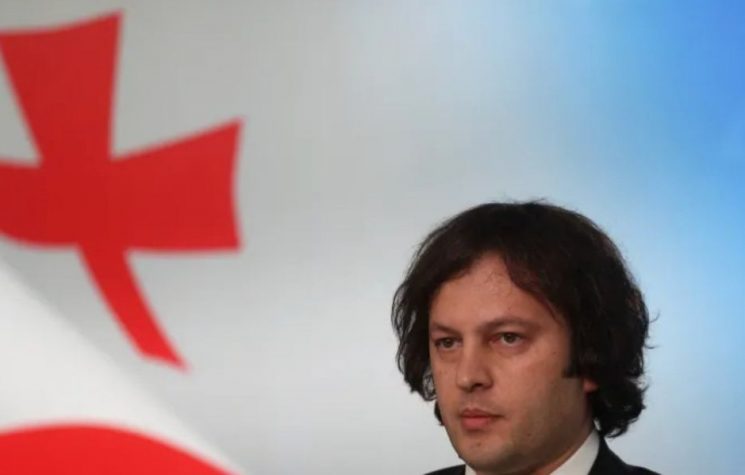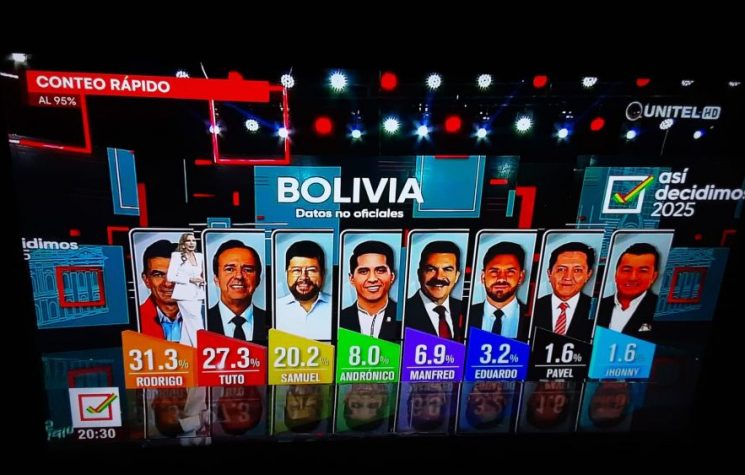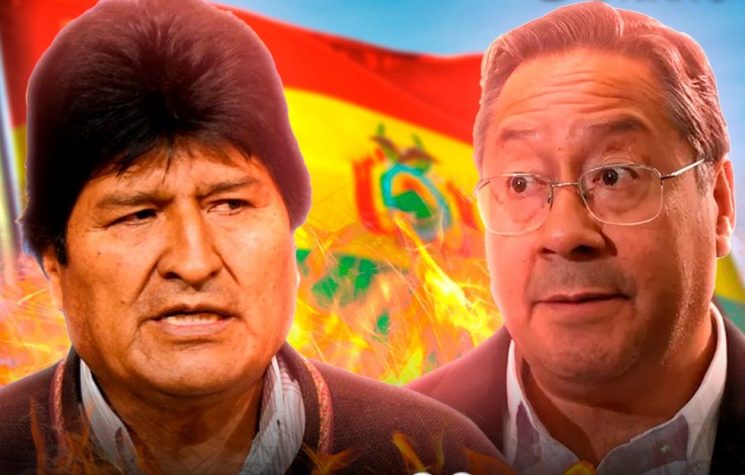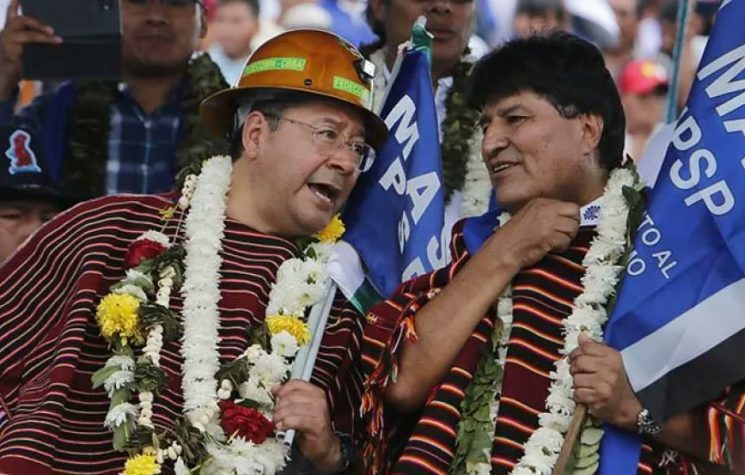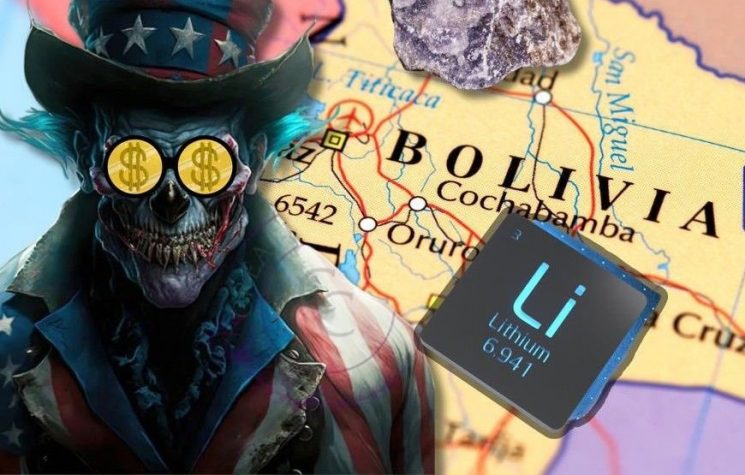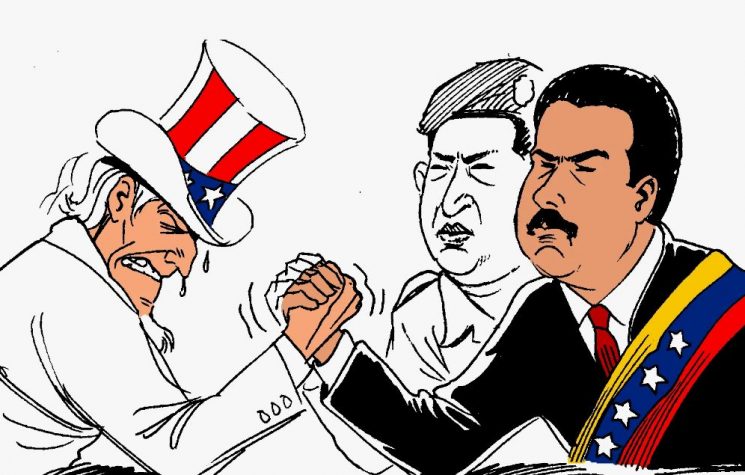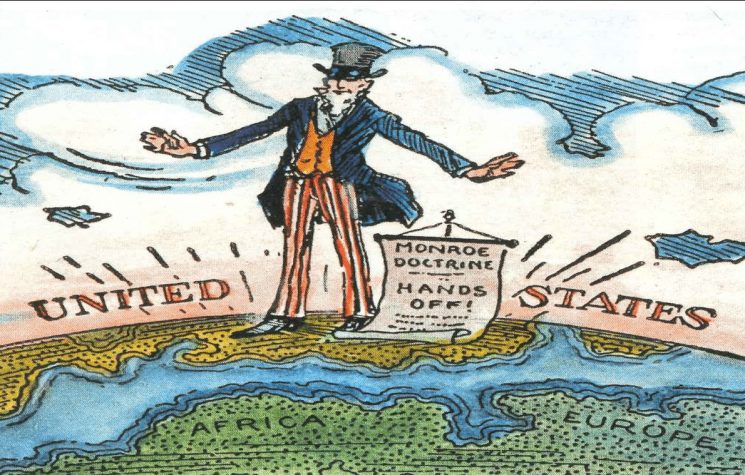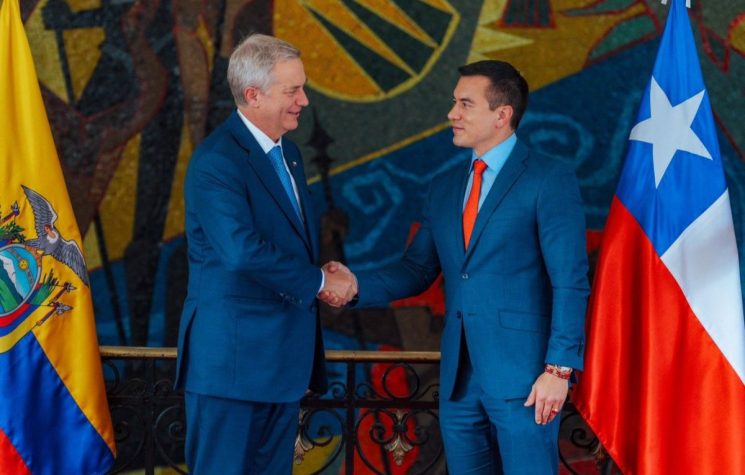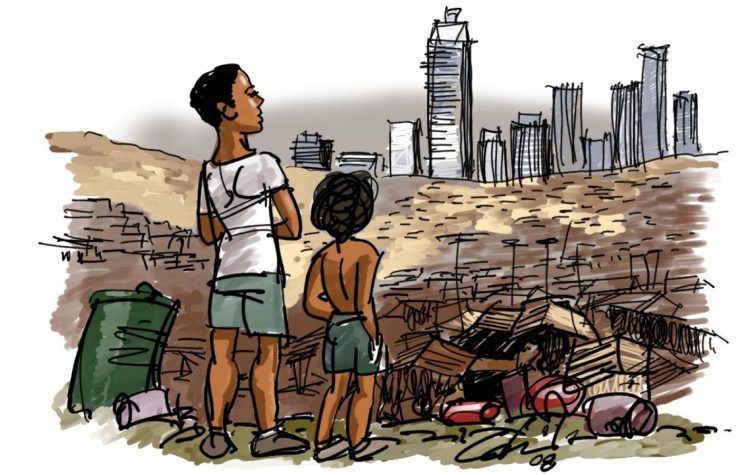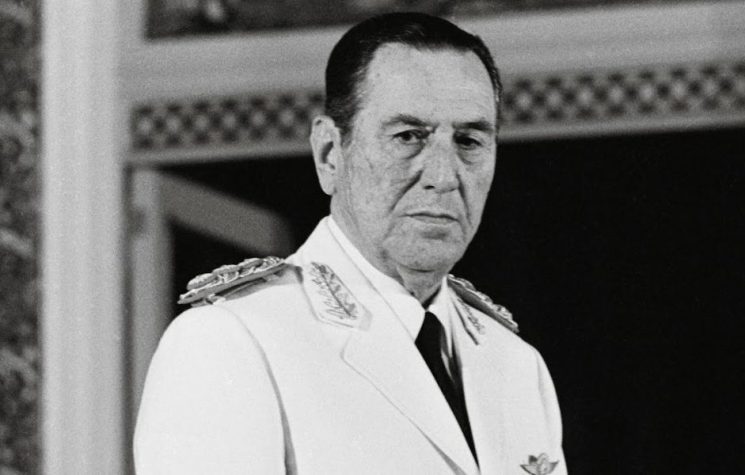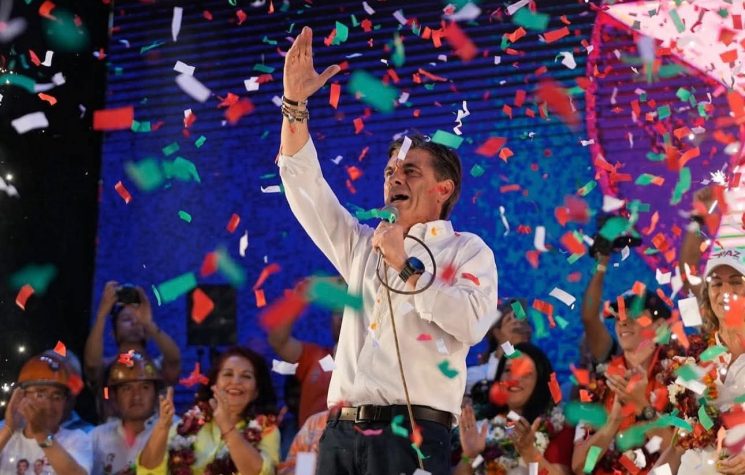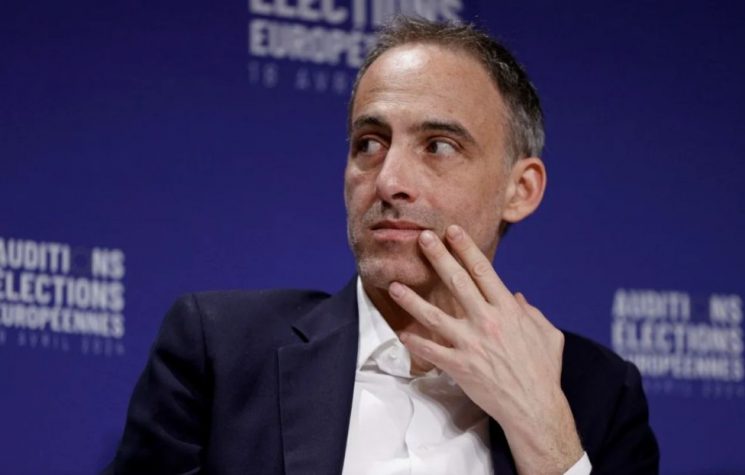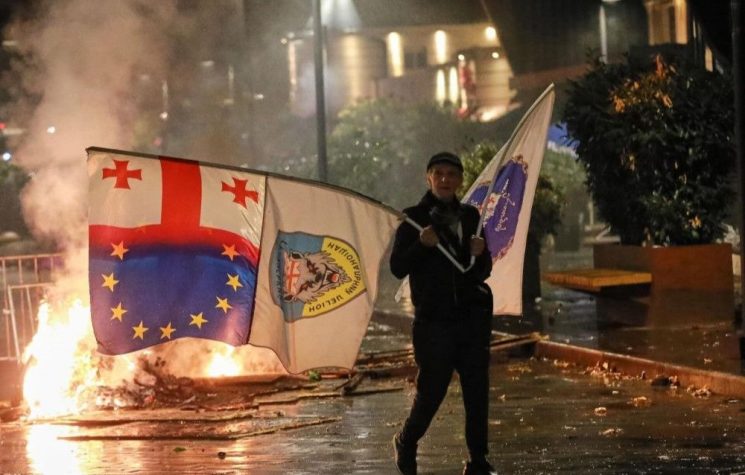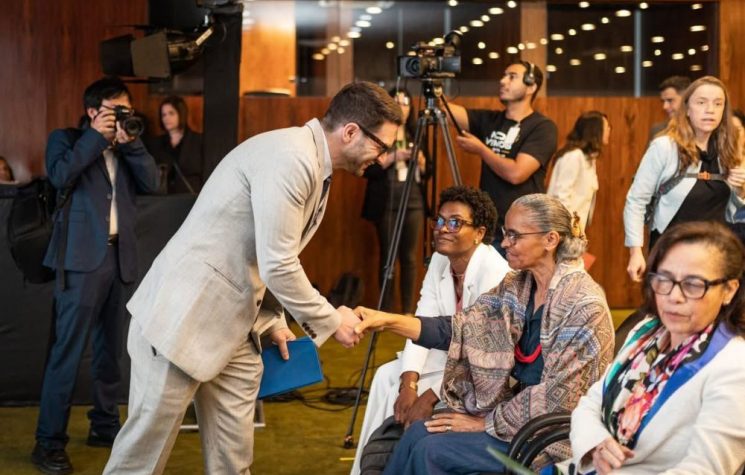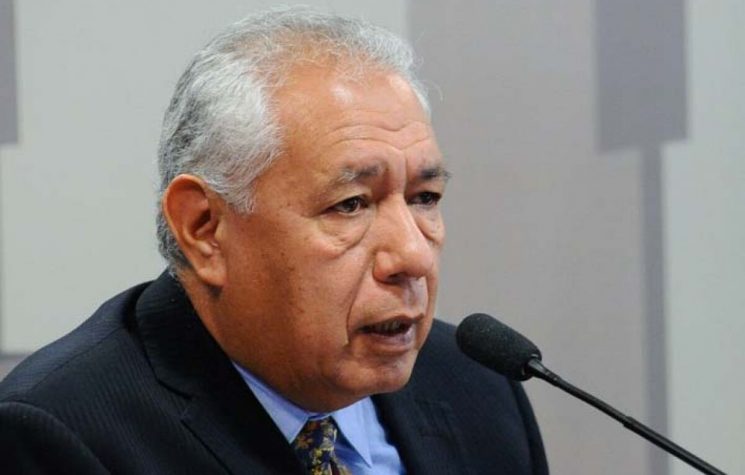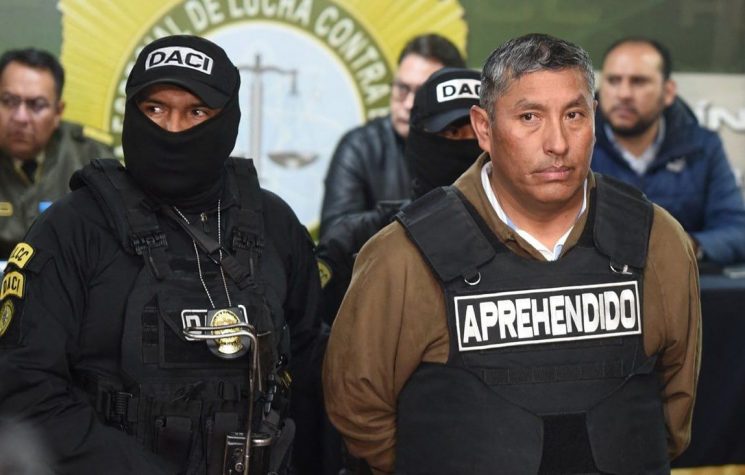The U.S. appears to be following a long-haul model that seeks to use weak forces like gravity to change the situation over time.
Contact us: info@strategic-culture.su
On Wednesday, June 26th, as most now know, Bolivia experienced a significant political upheaval that began with an attempted coup, orchestrated by an allegedly replaced military chief, General Zúñiga, and involving several officers and military resources. The coup was swiftly countered by a robust popular mobilization in support of President Luis Arce Catacora across the capital and other cities of the nation.
At least this is the narrative being presented through left-wing media in Latin America (Telesur, Granma, et al). The narrative focuses on the popular mobilization of the masses as the critical factor which ended the coup.
Significant and to the contrary is the claim by former president and actual coup target (2019), Evo Morales, that Arce himself ordered a ‘self-coup’. This mirrored a similar claim made by coup General Zúñiga himself, that Arce had ordered the coup.
The Narrative
We should note that separately from the reality of the popular mobilization narrative, hyper-reality or otherwise; this narrative is sacrosanct for Latin American leftism. It is identical to the theme used to explain the reversal of the April 11th 2002 coup in Venezuela against then president, Hugo Chávez.
In line with the official narrative promoted by Arce, as well as the official press of the Venezuelan and Cuban governments, the world was told how various national leaders – presidents and prime ministers – denounced the military action against Bolivia’s constitutional order. Through social media, and in press releases, they expressed solidarity with President Arce, condemning the attempt to undermine the Bolivian people’s will and emphasizing potential consequences of such actions.
The common theme within this well orchestrated messaging was the emphasis on the significance of respecting democracy in Bolivia and warnings against further destabilization in Latin America. The arrested coup leader, General Juan José Zúñiga, along with other implicated military personnel, faced legal proceedings initiated by the Attorney General’s Office for charges including terrorism and armed uprising.
General Zúñiga was apprehended and taken into custody by the Special Anti-Crime Force (Felcc) in La Paz.
There seems to be a conflation in Latin America of the “people-power stopping the coup” narrative, and support for the development of Latin America as an independent pole in the reality of the multipolar world we are in.
The problem, of course, is that one can both recognize and promote that Latin America should continue its course of liberation and growing collective, regional, sovereignty on the one hand, (as is the case with this author) but also be a dedicated political analyst that is tasked with delivering to the concerned public alternative perspectives and pure analysis free of the constraints of political or ideological imperative. More to the point – asking the right questions and probing for the truth is a virtue in and of itself.
The Twist
It was in the immediate aftermath of the failed ‘coup’, that we encountered the first twist – one that was unexpected for almost everyone: Zúñiga upon arrest, spoke to media and accused Arce of having invited the coup, asking him to mobilize in the square, in order to bolster the position of MAS, and as such, also bolster the position of not just Arce but also Morales. “The president asked me to do something to raise his popularity […] and he told me to bring out the armored vehicles!”, and, “The president [Arce] told me the situation was f*cked and that he needed something to boost his popularity.”
Zúñiga’s own motives were encapsulated in his stated concern – Arce’s administration would lead to the come-back of Morales in the upcoming 2025 elections. While Zúñiga accused Arce and the MAS government of humiliating the government and creating a mood of instability and uncertainty, the absolute danger, according to Zúñiga, was that Morales would return to power.
Jeanine Áñeez, for her part would betray expectations and denounce the coup and express support for Arce. Presently, Áñez, as you will recall, is in prison in connection to her role in the 2019 coup and leading the subsequent government, which was the focus of this author’s prior work at SCF on this question. Part of those charges include the massacre of indigenous pro-Morales activists who opposed the Áñez seizure of power during those grim November 10 events that year.
Bolivia is probably the most coup’d country in the world – having experienced some 190 successful coups against various governments since its independence from Spain in 1825. In addition, there have been some twenty-three attempted coups since 1950, which produced mixed results.
The take-away here is that Bolivia’s modern political elites are much more intimately aware of the various coup techniques than we would imagine the leaders in any number of other countries are. Generally, coup techniques are within the purvey of intelligence organizations. But in countries like Bolivia, a successful politician must have an equal or greater proficiency in insurgency and counter-insurgency, involving coups, color revolutions, and more.
We would be smart to conclude that both Arce and Morales understand very much about the various coup and insurgency techniques. It is a part of the job requirement.
Does the U.S. Prefer Arce over Morales?
One thing we must remember in all of this, is that Western and pro-U.S. publications, while overall critical of MAS and Morales’ government, saw Arce as the more reasonable player, willing to play ball. Despite Arce’s anti-IMF rhetoric, which appealed also to Morales’ base, the big fight between the pro-Morales MASistas in the plurinational legislative assembly is over the reneging of that commitment from Arce. To wit, Arce, despite his past promises and criticisms, has compromised with the IMF somewhat, and wants to bring more debt to Bolivia. There is also the issue of replenishing dollar reserves – moves that Washington welcomes, as it has recently in Argentina as well.
To be clear, there are far more desirable parties in theory which could rule in Bolivia from the U.S. perspective, than Arce or Morales. At the same time, the U.S. has been modifying its approach as it comes to terms with its own waning power in the world. The PPB-CN would be a dream come true. But the U.S. has a history also of making do with the reality presented. If Arce is even a few meters closer to the U.S. on certain questions, then we can understand this vector of approach. One can call this a ‘policy coup’ by a thousand paper-cuts. It’s acceptable to have a theoretically unacceptable party in power if they allow themselves to be whittled down into the shape of something more resembling U.S. policy.
The New York Times – mouthpiece of the CIA and a strong faction of the U.S. permanent administration, wrote a piece hailing the election of Arce, on October 23rd 2020.
In early April of 2024, Bloomberg reported that Bolivia had burnt through its IMF ‘Special Drawing Rights’, and the that publication in the course of a number of pieces on Bolivia, expressed some degree of confidence in Arce’s more ‘moderate’ approach.
Arce, you will recall, is a Western educated (University of Warwick at Coventry, United Kingdom, MB in Economics, 1997) former finance minister from Morales’ prior administration.
The pro-American empire publication, Foreign Policy, lent tacit if reserved approval for Arce against Morales, viewing him as more moderate, not appealing to Morales’ trade union and indigenous base, and not prone to engage in socialist rhetoric.
Central Banking reported hat Luis Arce as recently as April 2023, committed to replenishing and increasing U.S. dollar reserves.
We must not forget that Luis Arce was actually expelled from MAS on October 4th 2023 by the MAS leadership, where Morales still has power at the top. Arce has not recognized that expulsion, and as we enter the 2025 election, there would be two MAS candidates running against each other. Splitting the vote in such a way would not doubt hand the traditionally pro-U.S., “right-wing” opposition party PBB. The actual finding of the MAS leadership was the Arce ‘expelled himself’ for failing to appear at the meeting in which he would defend himself for breaking with MAS’ platform while continuing to falsely usurp and claim the name of the party.
This means that right now in Bolivia there are two MAS parties – the Evistas and the Arcistas. The problem for Arce is that the Evista faction controls the real MAS, and is the only legal and true MAS party in the country. The fact that this alone has not been a point of contention among any other political player in the country, including the PPB-CN and traditionally pro-U.S. ones, speaks for itself.
The Second Twist
As this coup was unfolding, within the first few hours and before it had been “foiled”, this author explained a version of situation via telegram in a series of posts. These show that prior to Zúñiga or Morales making the claim of a self-coup, this author had explained it as later both men would. At the time, we wrote, ahead of any other person, including those involved in the coup:
To paraphrase – Arce invited this coup. Luis Arce previously betrayed Morales’ platform and agenda some time ago – Morales and Arce split over re-dollarizing reserves, IMF questions, and who would be the party nominee in the 2025 elections.
Morales still had more weight in the party, and a meeting was to happen in a few days, on June 28th, that would clarify that the party would support Morales over Arce in the next election.
Arce and General Zúñiga, agreed to stage a coup, in one potential scenario, nominally against ‘Arce’, but actually against who Arce feared he might lose to – Morales.
In attempting to assess what kinds of agreements Arce had made with the U.S. or other Western leaders, and what sorts of other MAS ‘traitors’ had been involved, such as Monica Eva Copa.
After the coup that ousted Morales in 2019, figureheaded by Áñez and supported by neo-con forces within the Trump cabinet, we will want to investigate the workings of Copa, who exited the MAS, became senate president under the Áñez coup government, thus giving it legitimacy. But she also paved the way for the post-coup transitional elections which saw MAS return, but without Morales, and yet featuring the ‘technocrat’, Arce, hailed by numerous U.S. based financial publications as ‘responsible’ and ‘without rhetoric’ and a ‘moderating force within MAS’.
Again, it is significant to recall that these were immediate reflections and hypotheses introduced in the first minutes and hours of the attempted coup, before any identical statements made from Zuñiga on the same day, or Morales a few days later. This author continued to give some background to the workings of the coup-that-wasn’t.
Various Possibilities
We might understand this ‘coup’ to be a ‘shot across the bow’ in the intra-MAS fight between Arce and Morales. Morales and Arce were thought to have been able to reach a ‘final compromise’ on the campaign and candidacy for the 2025 election on Friday June 28th, according to insiders and local media reports. Morales has more support within the MAS party cadre, the labor unions, and agricultural sector. Clearly, this author’s view now is deeply prejudiced by the statements from those involved afterwards. If they both run, a united opposition against them could win the day.
Of course, we can still say ‘who knows?’ what really happened that day. But we can conclude here by trying to give some historical and ideological background in understanding more complex methods that the U.S. employs to slowly divide and redirect developments in a target country, in a more desirable direction. This is an advanced coup technique which takes its time, and erodes slowly on policy questions within the ruling party, instead of trying to overthrow the ruling party under conditions when such an overt method would prove unstable. Speaking of which…
Áñez is often called a ‘right-wing’ politician, and of course is known for the one year coup government, her participation in which is the source of her present exile. But it’s more complicated than this. And it obfuscates what’s really going on.
This is why Copa is such an interesting part of this puzzle, the MAS member who must be a significant link between Arce and those behind the Áñez government (in the U.S.).
Bolivia’s Big Questions
The big fights in Bolivia are over a few issues.
- Centralism vs Decentralism (this is huge, the next four actually fall under this)
- Lithium and who outside of Bolivia gets to buy it (Elon?)
- The Coca industry – how to legalize, how to regulate, how to pitch it to the EU as acceptable (cocaine toothpaste, medical applications, legalization of weaker cocaine-based chewing gums similar to nicotene gum)
- Judicial reform
- The census
Again, the fight over Centralism vs Decentralism is the key issue. Áñez during her short time represented decentralizing forces, in line with the U.S., whereas Morales represents centralizing forces which promote sovereignty. But Copa, nominally part of Morales/Arce’s MAS, actually was aligned with the players (on the Bolivia side, Costas’ MDS/UD) who backed Áñez on the question of decentralization.
As we explained, these (MDS/UD) do not represent the large, and well established, right-wing opposition, as that would be PPB-CN. Áñez had not been a member of the PPB since 2013 or so. All her politicking has been through the MDS/UD.
The MDS/UD is left-wing, and right-wing, depending on where they are running. This is because their real issue is decentralization. Ultimately, decentralization would change everything, change the constitution, and open up various ways (via regional autonomy, via changes to the courts, etc.) that would allow more influence from the U.S./globalists into the key industries – cocaine and lithium.
Actually, the MDS (Social Democratic Movement) and the UD (Democratic Unity) aligned their position on indigenous rights, gay rights, and nominal environmental conservationism, with the right wing of the MAS (of which Copa was key, and Arce supported in the shadows one would allege, and in some ways even openly.
Copa helped legitimize Áñez, and was no doubt behind the ‘pro-indigenous’ and ‘feminist’ messaging that Áñez rolled out, which confused world readers about what was going on. In actuality, Áñez ordered troops to open fire on and kill indigenous activists who opposed the coup that ousted Morales.
Meet the New Latin American Right – The Pink Washed, Democracy Light, Center
Back to the idea that Áñez is ‘right wing’. Her part of the opposition is actually not aligned with the historically right-wing opposition. She has these connections, and it wouldn’t be wrong to say has some of these affinities, but the ‘right wing opposition’ and Áñez were not the same.
No, this whole mess is best explained in the model the U.S. is using in Latin America for over a decade now. It is about breaking with the traditional Latin American right wing, associated with the conservative ethnically-conscious European descended wealthy, and instead plays up cultural leftism, pink-washing with LGBTQP+, and competes with the more radical left on the cultural terrain such as performative indigenous rights. Many of these people were educated in more recent decades in Western universities, and were molded around themes today known as ‘political correctness’.
This appeals to a more emergent generation of well-to-do, even rich, European descended people in Bolivia, who want to justify themselves in indigenous rights, feminism, etc., while actually promoting anti-sovereign economic policies in Bolivia, which favor the very wealthy Bolivian elite. These are people who travel, have friends around the world, and the spirit of the age does not bode well for outright Euro-centric colonial politics in Latin America.
Latin America’s new pro-imperialist right wing has been increasingly re-branded as the pink-washed “center-left”. Perhaps more accurately described as the center-right with politically correct characteristics.
The main issues in the long-haul in Bolivia revolve around sovereignty. The U.S. appears to be following a long-haul model that seeks to use weak forces like gravity to change the situation over time. This also greatly mitigates unwanted blowback, the type which can frustrate coup plans.
As new information comes in the coming days and weeks, we will most certainly adjust the analysis where appropriate.










